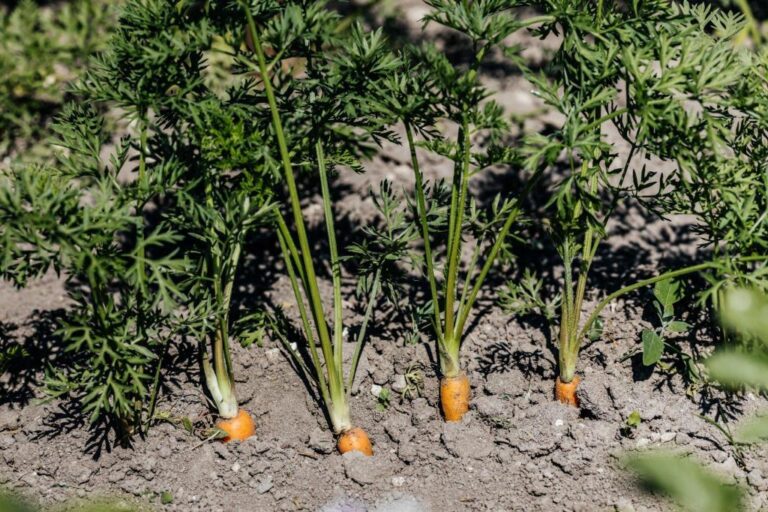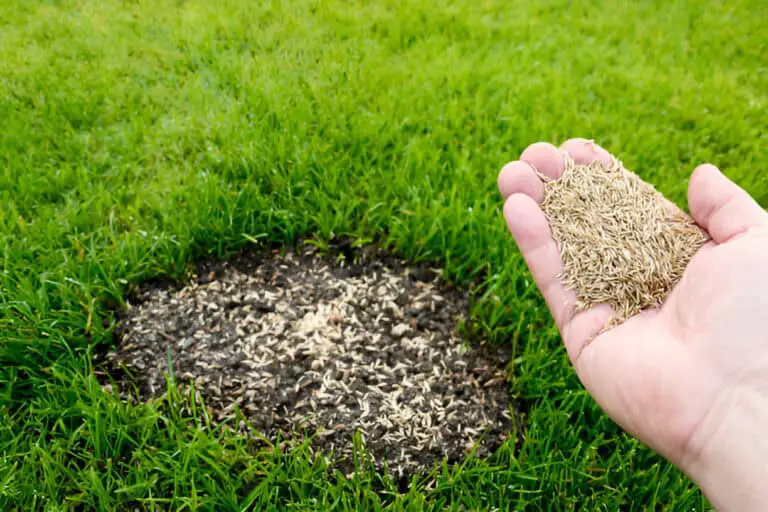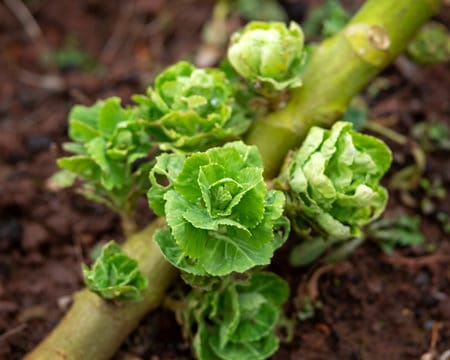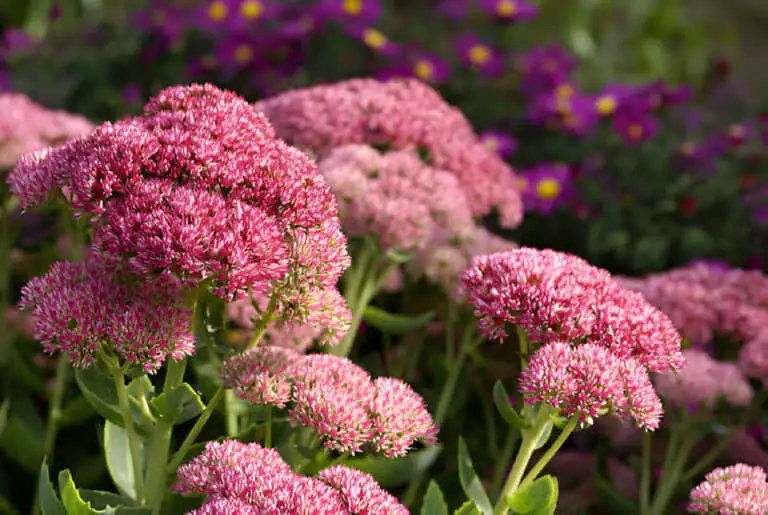Are Tomatillos Self Pollinating? How to Hand-Pollinate Tomatillos Plant

When I started gardening, I could not stay away from the allure of tomatillos. Tomatillos are those vibrant and tangy green gems beloved in many culinary traditions. As I nurtured these vibrant green gems in my backyard, a question echoed in my horticultural exploration: Are tomatillos self-pollinating?
This inquiry led me down a garden path rich in botanical mysteries and hands-on revelations. In this article, join me as we unravel the enigma of tomatillo reproduction, exploring the intricate dance between nature and the gardener’s touch.
We’ll dig into the fascinating details of their flowering process and delve into the art of hand-pollination, demystifying the steps for a flourishing tomatillo crop. Whether you’re a gardening novice or a seasoned green thumb, let’s embark on this journey together and unlock the secrets that make tomatillos thrive in our own backyard havens.
What Are Tomatillos?
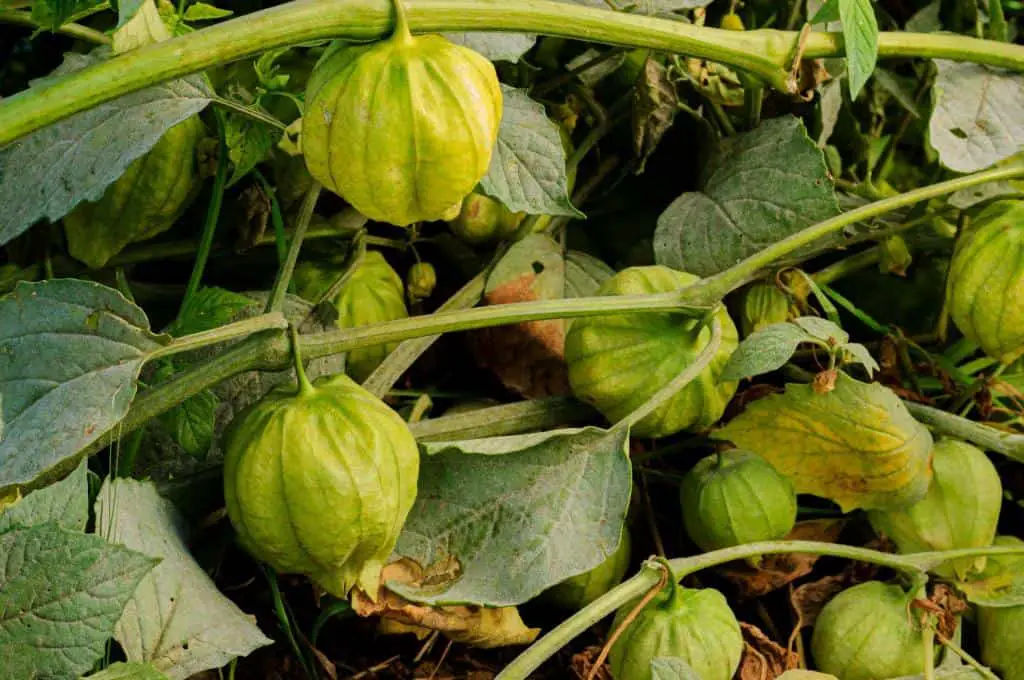
Tomatillos, also known as Mexican husk tomatoes, are small, spherical fruits enclosed in a paper-like husk. Native to Central America, tomatillos belong to the nightshade family and are closely related to tomatoes.
They have a tangy and slightly citrusy flavor, making them a popular ingredient in many Mexican and Central American dishes. Despite their name, tomatillos are not actually small green tomatoes but rather a distinct fruit with its own unique taste and texture.
One interesting feature of tomatillo plants is that they are self-incompatible, which means they require pollen from a different plant for successful fertilization (cross-pollination). This characteristic makes it necessary for gardeners to pay extra attention when growing them, especially if there isn’t an abundance of pollinators in the area.
Understanding the need for cross-pollination can help ensure a bountiful harvest of these flavorful fruits.
By learning how to hand-pollinate tomatillo plants, gardeners can take control of the pollination process and increase their chances of producing delicious yields even without natural pollinators.
Are Tomatillos Self-Pollinating?
The short answer is no. Unlike some plants that can fertilize themselves, tomatillos benefit from cross-pollination. This means they require pollen from a different tomatillo plant for successful fertilization. Understanding this crucial aspect of their biology sets the stage for maximizing your tomatillo crop.
Tomatillo Flowering Process

Tomatillos undergo a remarkable flowering process, signaling the start of their reproductive journey. The plants produce delicate, lantern-like blossoms that eventually transform into the husk-covered fruits we love. Each tomatillo flower consists of both male and female parts, yet they need a little help to transfer pollen efficiently.
The Role of Pollinators and Hand-Pollination Techniques
Natural Pollinators: Bees and More
In a natural setting, bees play a significant role in tomatillo pollination. They collect pollen from one flower and transfer it to another, facilitating the fertilization process. However, relying solely on these winged wonders may not be sufficient for an abundant harvest.
Hand-Pollination: A Gardener’s Secret Weapon for Tomatillos
Why Hand-Pollinate?
- Control: Take charge of the pollination process for optimal results.
- Increased Yield: Ensure a higher fruit set by assisting nature.
How to Hand-Pollinate Tomatillos: A Step-by-Step Guide
Hand-pollination techniques are essential for ensuring a successful tomatillo harvest, especially when dealing with limited insect activity or growing plants indoors.
Step 1. Identify flowering stages:
- Male Flowers: Recognizable by their slender stems.
- Female Flowers: Distinguished by tiny, immature fruits at the base.
- Look for flowers with fully open petals and visible pollen inside.
Step 2. Timing Matters:
- Pollinate during the morning when flowers are fully open.
- Ideal conditions include dry weather to prevent damage to delicate blossoms.
Step 3. Gather Necessary Tools:
- Small paintbrush or cotton swab for gentle pollen transfer.
- Latex gloves, if preferred.
Step 4. Locate Male Flowers:
- Gently brush the male flower’s anthers to collect pollen.
Step 5. Transfer Pollen to Female Flowers:
- Apply the collected pollen to the stigma in the center of the female flower.
Step 6. Repeat as Needed:
- Hand-pollination may be necessary several times during the growing season.
| Related: Do Pomegranates Self Pollinating? |
Tips for Successful Hand-Pollination
- Avoid Overhandling: Be gentle to prevent damage to delicate flowers.
- Timing Is Key: Aim for mornings when flowers are most receptive.
- Gently shake the plant or tap the stems: This actions mimics the motion of bees buzzing around and naturally spreading pollen.
- Rotate Pollen Sources: Introduce pollen from different tomatillo plants for genetic diversity.
Troubleshooting Pollination Challenges
Common Pollination Issues
- Poor Fruit Set:
- Addressed by increasing hand-pollination frequency.
- Weather-Related Challenges:
- Shelter plants during extreme weather to protect blossoms.
- Lack of Pollinator Presence:
- Introduce pollinator-friendly plants to attract bees.
Conclusion: Cultivating a Thriving Tomatillo Crop
In concluding our exploration of tomatillo pollination, we’ve demystified the intricacies of the tomatillo flowering process and the intriguing world of self-pollination in tomatillos. As we navigated through the male and female components of tomatillo flowers, it became evident that while they possess the potential for self-pollination, a little intervention can go a long way in ensuring a bountiful harvest.
Understanding the pollination mechanism in tomatillos reveals the delicate dance between these vibrant plants and the forces of nature. As gardeners, the art of hand-pollination becomes a powerful tool in our arsenal, allowing us to take control and optimize the process. Our journey into growing tomatillos has been enriched with valuable insights, offering pollination tips that extend beyond the garden bed.
So, as you cultivate your tomatillo haven, remember the nuanced symphony of tomatillo pollination. Whether nature takes its course or you lend a helping hand, the result is a flourishing crop that adds a burst of flavor to your culinary creations. Happy gardening!
FAQs
Are there any advantages to tomatillos being self-pollinating?
While tomatillos generally benefit from cross-pollination, self-pollination can be advantageous in controlled environments. However, promoting cross-pollination often results in a more robust harvest.
What happens if tomatillos aren’t properly pollinated?
Inadequate pollination can lead to poor fruit development and smaller yields. Hand-pollination becomes crucial to ensure a higher success rate and a more abundant tomatillo crop.
Can you use any pollen for hand-pollinating tomatillos?
Ideally, use pollen from another tomatillo plant for hand-pollination. This ensures genetic diversity and promotes healthier fruit development.
Are there natural pollinators for tomatillo plants?
Yes, tomatillos attract natural pollinators such as bees. Creating a pollinator-friendly environment with companion plants can enhance natural pollination and reduce the need for hand-pollination.
Can you hand-pollinate tomatillos with any tool?
Yes, hand-pollination is possible using a small brush or cotton swab. Gently transferring pollen between flowers aids in the pollination process, especially if natural pollinators are scarce.
How does self-pollination in tomatillos impact their genetic diversity?
Self-pollination in tomatillos can lead to reduced genetic diversity. Encouraging cross-pollination ensures a broader genetic pool, promoting healthier and more resilient plants.
Are there specific tips for pollinating tomatillos while growing them?
Yes, for optimal results, plant tomatillos in groups to facilitate cross-pollination. Additionally, creating a pollinator-friendly environment with companion plants enhances natural pollination and reduces the need for manual intervention.

